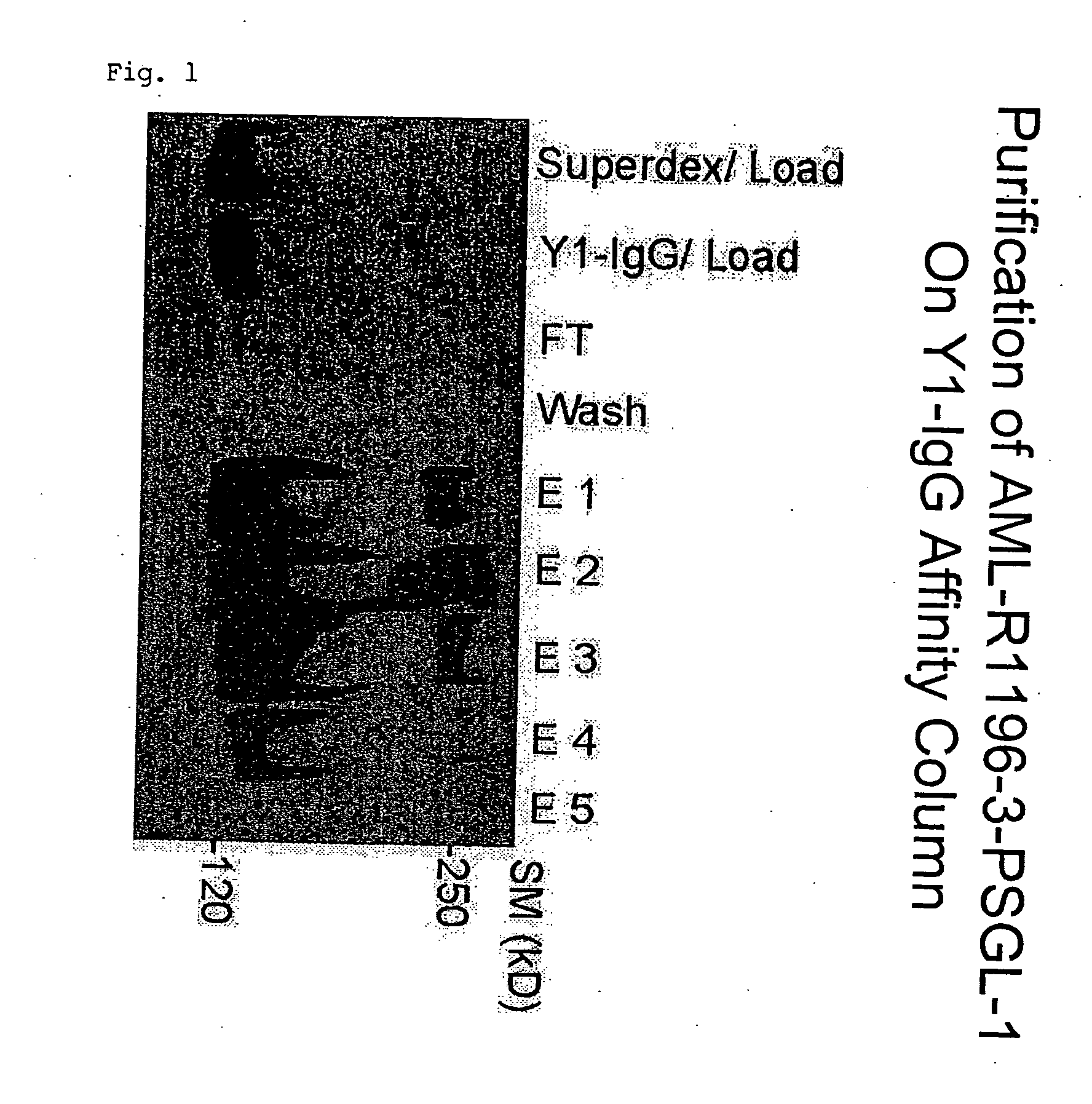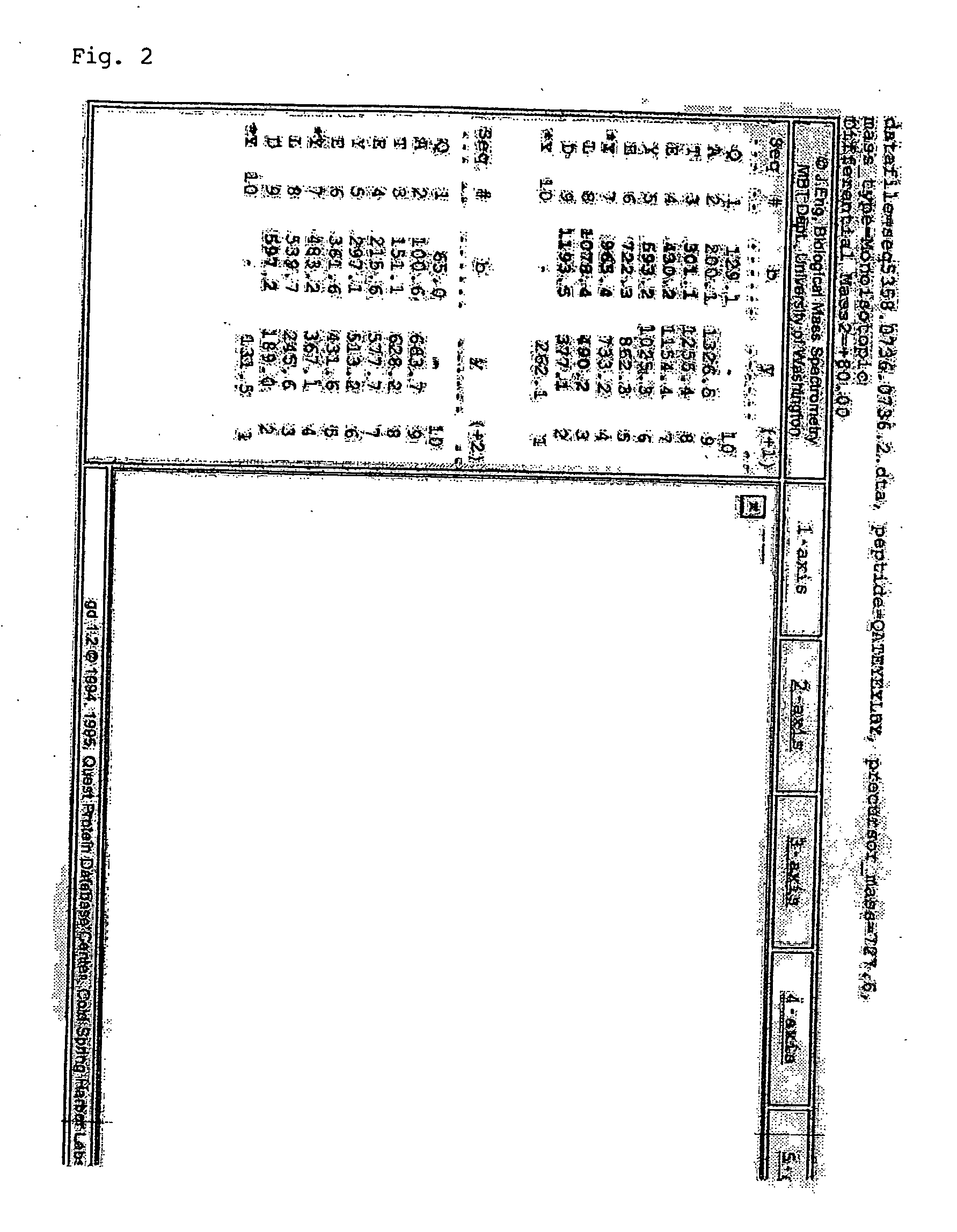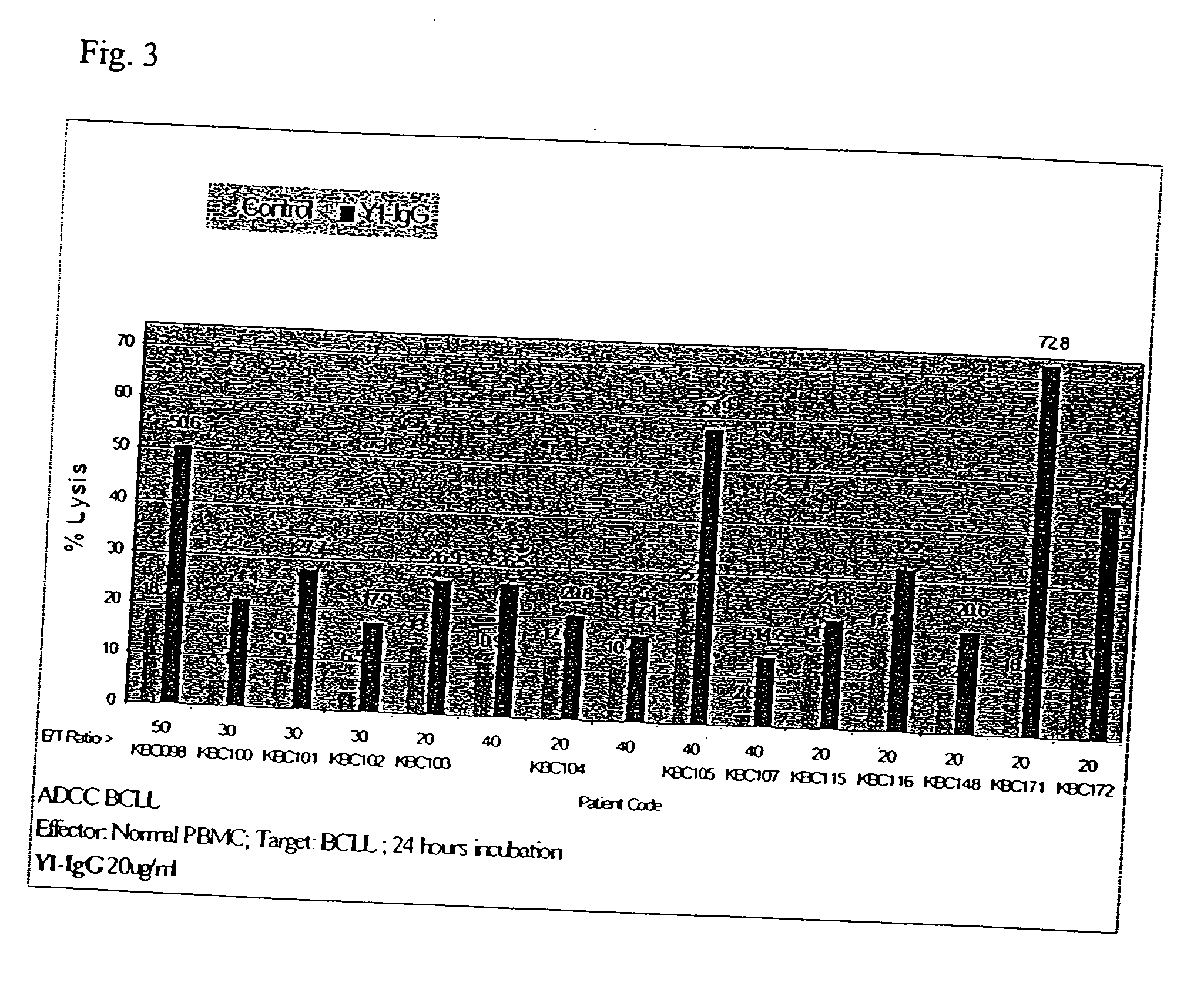Specific human antibodies
a technology of specific human antibodies and antibodies, applied in the field of specific human antibodies, can solve the problems of various pathological inflammations, cancer patients' survival, etc., and achieve the effect of preventing infection
- Summary
- Abstract
- Description
- Claims
- Application Information
AI Technical Summary
Benefits of technology
Problems solved by technology
Method used
Image
Examples
example 1
Identification of Y1 Ligand from Primary AML Cells (R1198-3)
[0179] 1.1 Primary AML cells (stage M4) were collected from a patient and lysed. The lysate was subjected to purification comprising affinity chromatography on a Y1-IgG column (see FIG. 1). The isolated protein was digested with endoproteinase Asp-N, and the resulting peptide sequence was determined using mass spectrometry. The sequence was identical to the published human PSGL-1 N-terminal amino acid sequence. These results indicate that primary AML cells at stage 4 express PSGL-1 that can be bound by Y1-IgG. It was further determined that the purified protein was sulfated at tyrosines 2 and 3 of the Y1 recognition motif (see FIG. 2). Internal controls were used to verify the specificity of the immunomodulatory effects of Y1 e.g. no induction of mouse interleukin-6 secretion was detected.
example 2
Antibody-Dependent Cell Cytotoxicity
[0180] 2.1 Effect of Y1-IgG:
[0181] Studies to determine whether Y1-IgG is capable of mediating antibody dependent cell cytotoxicity (ADCC) have shown this antibody mediates effector cell cytotoxicity of various target cells, including ML2 (an AML-derived cell line which served as a target in our model system) and B-CLL cells from patient clinical samples. Y1-IgG binds these cell types via CD162 (PSGL-1), a molecule which is substantially absent on healthy B-cells and early stage AML.
[0182] The effector cell populations that are involved in Y1-IgG ADCC have been defined. For Y1-IgG to mediate ADCC, natural killer (NK) cells (CD56+), γδT cells, and monocytes (CD14+) are required, but T-helper cells (CD4+) and cytotoxic T cells (CD8+) are not required. This was confirmed with donor cells from both healthy subjects and B-CLL patients.
[0183] Furthermore, even in the absence of target cells, Y1-IgG mediates activation of different types of effector ...
example 3
Y1-IgG-M-Daunorubicin Derivative
[0209] 3.1 Preparation of Y1-IgG-M-Daunorubicin Derivative: Antibody-toxin conjugates such as morpholino-doxorubicin-Y1-IgG (FIG. 13) and antibody-M-daunorubicin conjugates (see below) were prepared. Daunorubicin was modified, joined to one of two different linkers, and then joined to the antibody via the antibody's free amino groups or via the antibody's reduced disulfide bonds. The term M-DNR-LINKER refers to both (6-Maleimidocaproyl)hydrazone of Morphlinyldaunorubicin acetate and to M-DNR-AES.
[0210] a. Preparation of 3′-Deamino-3′-(4-morpholinyl)daunorubicin acetate (M-DNR-Ac)
[0211] Dry triethylamine was added to a solution of daunorubicin hydrochloride in dry dimethylformamide, under argon, followed by bis(2-iodoethyl) ether. The reaction mixture was protected from light and stirred for 36 hours at room temperature.
[0212] The resulting aqueous mixture was extracted with methylene chloride. The organic phase was dried over anhydrous sodium sulf...
PUM
| Property | Measurement | Unit |
|---|---|---|
| Composition | aaaaa | aaaaa |
| Cell death | aaaaa | aaaaa |
| Adhesion strength | aaaaa | aaaaa |
Abstract
Description
Claims
Application Information
 Login to View More
Login to View More - R&D
- Intellectual Property
- Life Sciences
- Materials
- Tech Scout
- Unparalleled Data Quality
- Higher Quality Content
- 60% Fewer Hallucinations
Browse by: Latest US Patents, China's latest patents, Technical Efficacy Thesaurus, Application Domain, Technology Topic, Popular Technical Reports.
© 2025 PatSnap. All rights reserved.Legal|Privacy policy|Modern Slavery Act Transparency Statement|Sitemap|About US| Contact US: help@patsnap.com



